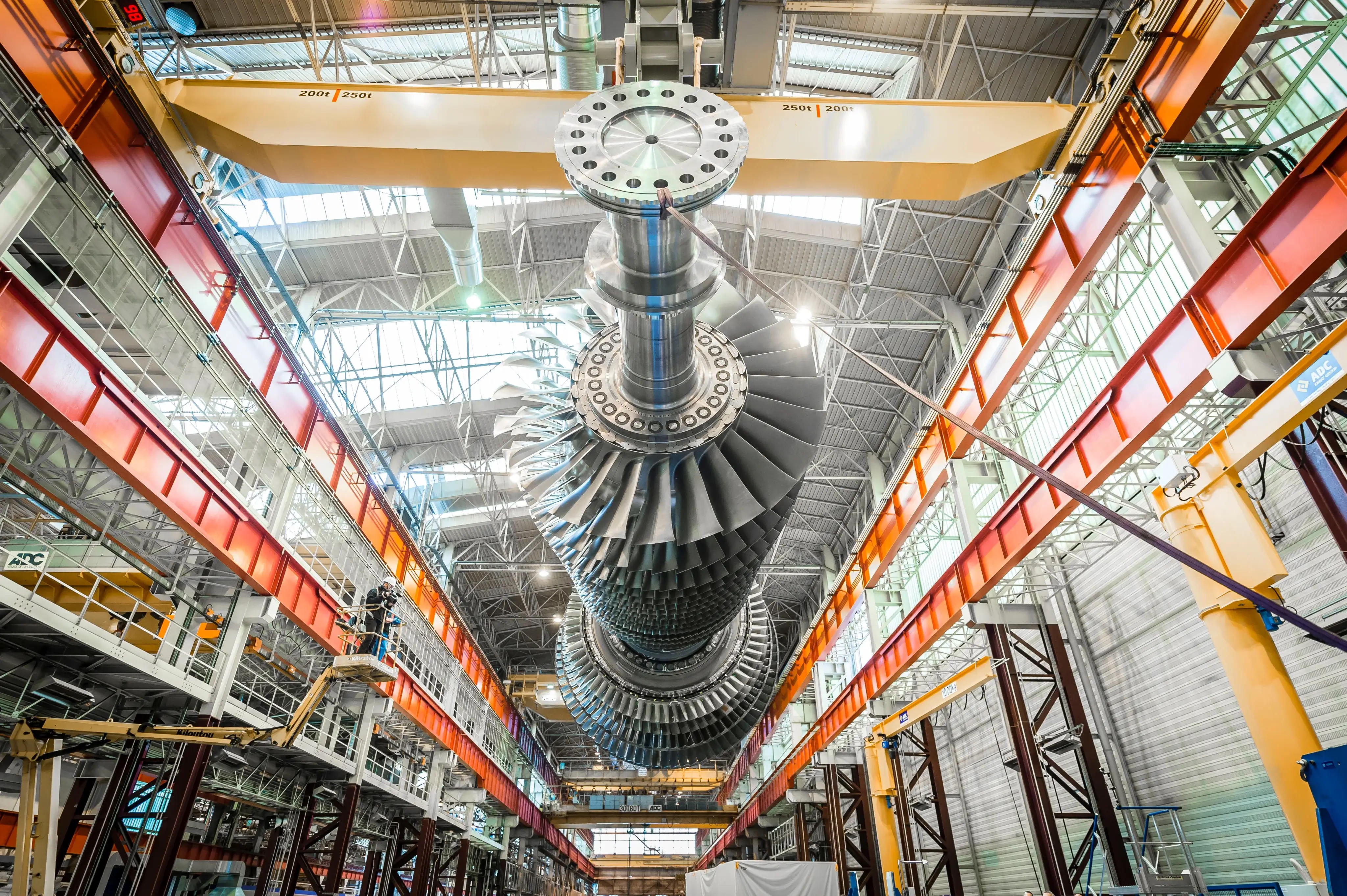ELECTRIFY
Our commitment to catalyze access to more secure, sustainable, reliable, and affordable electricity, while helping to drive global economic development.
Leading Goals and metrics
Be a leading provider of new power generating capacity and grid capacity for the world
Address electrification in regions underserved by reliable, affordable, and sustainable electricity
Support workforce development, with a focus on underserved populations globally





How Our Businesses Contribute to Electrification
Power
Our Power segment is focused on electrifying the world to accelerate a path to more reliable, affordable, and sustainable energy, while developing decarbonization solutions for a lower carbon future. Our Power businesses provide customers with efficient natural gas, small modular reactor & nuclear power, hydro power, and steam technology, services, and solutions.
Electricity is vital to modern civilization and critical to prosperity, health, and safety. We believe the world needs – and will benefit from – more electricity. The future electric power system must meet demand growth while also incorporating new and diverse sources of energy, and preserving or improving system reliability, affordability, and sustainability.
As a company whose technology base helps generate approximately 25% of the world’s electricity, we are passionate about innovating and investing across our broad portfolio of technologies to help the world meet growing demand for electricity while also reducing the carbon intensity of power grids and electricity supply.
Approximately 760 million people globally lack access to electricity, and some of those who do have access experience frequent, extended outages that disrupt their lives, impact their safety and security, and challenge their economic growth. We believe it is critical to bring power to the grid to address electrification in underserved regions.
The Electrify pillar in our Sustainability Framework encompasses our passion and commitment to preserve and increase global access to electricity with a focus on underserved regions. Electrification is also one of the most important enablers for global decarbonization at scale – we must electrify the world to decarbonize it.
Progress Towards Our Leading Goals and Metrics
Our leading goals and metrics provide focus to our sustainability strategy, helping to focus our efforts where it matters most. Each goal is designed to drive progress across the whole organization and enable more transparent reporting. Find out about the progress we made towards our goals in 2023.
Be a leading provider of new power generating capacity and grid capacity for the world
Meeting the world’s increasing demand for reliable, secure, and affordable electricity is critical to life, health and safety. It is also the foundation for economic growth, and improved quality of life. We understand that electricity will be a key enabler for decarbonization of other sectors of the global economy.
Demand for electricity is expected to grow by more than 50% in the next twenty years given electrification of economies and serving approximately 760 million people that now lack access to reliable, affordable, and sustainable electricity. Electrification is also one of the most important enablers for global decarbonization at scale, providing opportunities to install renewable energy or low carbon generation technologies. Our goal is to continue to be one of the world’s leading providers of power equipment and innovation to meet growing global demand.
Address electrification in regions underserved by reliable, affordable, and sustainable electricity
Increasing access to reliable, secure, and affordable electricity fuels growth and opportunity in global economies and helps improve the quality of life. Our goal to address electrification in underserved regions is aligned with the UN’s Sustainable Development Goal 7.
As the demand for energy continues to grow, we understand the critical nature of generating and electrifying all parts of the world, particularly in regions lacking secure, reliable, sustainable and affordable electricity. Energy is fundamental to economic development and societal progress, and is interconnected to vital systems supporting agriculture, business, communications, education, healthcare, and transportation.
Support workforce development, with a focus on underserved populations globally
Within the next decade, one of the greatest challenges for the energy sector will be the increasing demand for skilled labor.
As investment in new energy infrastructure continues to increase, so does the need for an expanded workforce that is skilled in developing and implementing lower emissions power and grid solutions. Workers from sub-sectors with declining labor needs, such as oil and coal, may already possess the skills needed for the Energy Transition (e.g. wind, hydro, battery storage, and nuclear) and could be retrained and deployed. The energy sector typically requires highly skilled, specialized energy workers compared to other industries, with 36% of the energy workforce typically requiring some form of tertiary education, and 51% some vocational training.
How Our Technologies Are Delivering Electrification
ENERGY SOURCE
Nuclear
Gas
Wind
Solar
Water
How Our Technologies Are Delivering Electrification
GENERATE
Our technology helps to generate approximately 25% of the world’s electricity.
TRANSFER
Grid and electrification solutions to transfer power more reliably and efficiently.
ORCHESTRATE
Automated, digital power management systems.
CONVERT
Science, systems and advanced technology to improve efficiencies in power conversion.
STORE
Intelligent solar and storage solutions to address the variability of renewable energy supplies.
ENERGY DESTINATION
Home
Business
Industry

FIND OUT ABOUT THE OTHER PILLARS OF OUR SUSTAINABILITY FRAMEWORK
The four pillars of our sustainability framework work together to help create a more equitable, thriving planet.
Generating capacity is the amount of power that we provide to the grid, that is then distributed to homes and businesses. GE Vernova includes power created from steam, gas, nuclear, wind, and hydro. Grid enabling capacity is amount of power that can be effectively transmitted through newly installed infrastructure to homes and businesses.